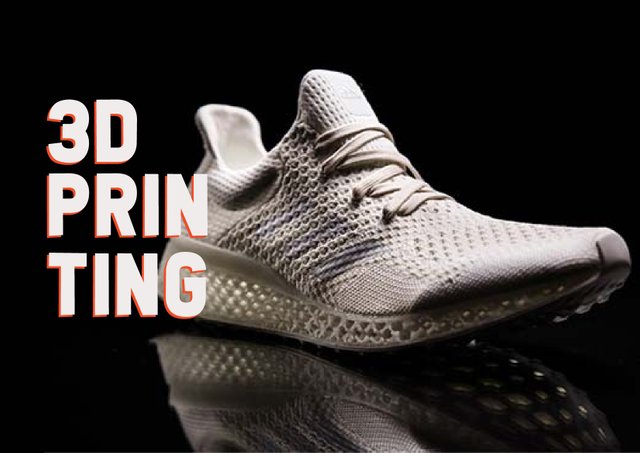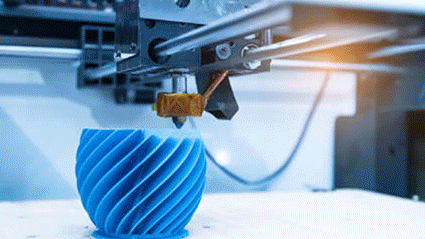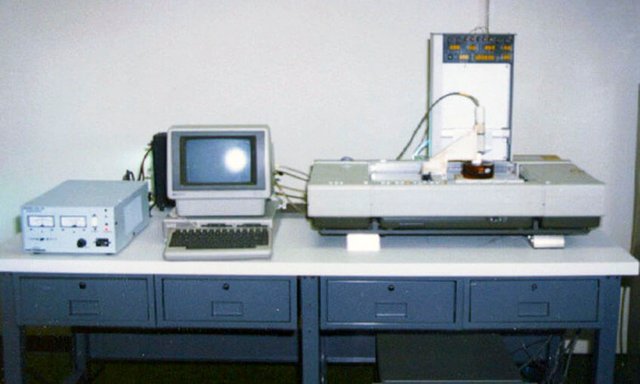
Today we are going to explore one of the most revolutionary technologies of 21st century, one that allows you to convert your virtual ideas in physical objects in a simple, fast and practical way and if that’s not enough for you, it is available from engineers to enthusiasts, beginners and makers.
But before we get there, we will checking what’s a dimension and what’s the difference between a two-dimensional and a three-dimensional space. LET’S GO.
What’s a dimension?
It is called “dimension” to the space in which an object exists. So...there is an object and that space where it exists, with its laws, conditions and characteristics is called dimension. The word dimension has several applications, depending on the area from which it is used, but in this article we will focus on the area of design, printing and production.

That line exists in a single dimension, the length. But if we add some height…

Now we are in a 2D dimension, cause there are length and height.
All the figures that exist in a 2D space have height and length and what they don’t have is depth, which is the main feature of three dimensional or 3D space. -This is just to refresh and get contextualized-

3D PRINTING
From 1940 until now we have been perfecting how to print our ideas. In another article we probably go through development of 2D printing, however, today we are going to explore our latest advance in terms of printing: 3D printing. There are several characters involved in the development of three-dimensional printing technology, let’s start with “the beginning”
1859: A NEED ARISES.
François Willème, photographer and sculptor uses 24 cameras simultaneously to capture all the possible angles in his model. In this way the seed of the “3D scanning” technology emerges.
1892: A PATENT IS BORN.
Inventor Joseph E. Blanther creates topographic maps with depth, making the model three-dimensional. It uses the stratification method, which consists of layering the material to be used, one on top of the other, giving then relief and shape.
1980: 3D PRINTING IS BORN
In the middle of a society focused on 2D space with the technique of photography using Kodak and Polaroid, the first attempts at 3D printing arise. In May 1980, Dr. Hideo Kodama of the Municipal Industrial Research Institute of Nagoya, the fourth largest city in Japan, presented the first patent related to 3D printing technology, describing a “rapid photopolymer prototyping system”. Although the idea is already conceived it does not materialize.
By the way, photopolymers are synthetic substances that can have molecular changes by the action of light, usually ultraviolet.
1986: STEREOLITHOGRAPHY DEVICE ARRIVES.
1986: STEREOLITHOGRAPHY DEVICE ARRIVES.
Chuck Hull invents an apparatus with a laser that groups the molecules of the material and arranges it in layers, generating relief.

1987: THE SELECTIVE LASER SYNTHESIS (SLS) METHOD IS BORN
Carl Deckard, of the University of Texas, generates an alternative method to Chuck’s, turning dust matter into solid by using a laser. His first prototype is called “Betsy”.
1989: MOLDED DEPOSITION MODELING (FDM) IS BORN
The married couple of Scott Crump and Lisa Crump, invent and patent another new method, the Fused Deposition Modeling. It consists of melting polymer filaments to be deposited with a nozzle on a surface, layer by layer. Similar to hot silicone guns.
2004: A DEMOCRATIC PRINTER IS BORN.
Adrian Bowyer, founded the project RepRap, open source project whose goal is to manufacture a 3D printer that can print most of its components. Everyone can participate cause is open source. From there arise a series of models within which are Darwin, Mendel, Prusa Mendel and Huxley, all print models got scientists names who have worked with evolution.
2008: THE 3D PRINTING SERVICE IS GENERATED.
Shapeways is born in Holland, a 3D printing service that is available to a wider audience. Shapeways receives the 3D models of their clients, prints them and sends them back. Thanks to three-dimensional printing is popularized.
2009: MAKERBOT ARRIVES
Makerbot is an open source project D.I.Y (Do It Yourself) that consists of creating kits so people can build their own 3D printers from home, selling to date more than 100 thousand units. They also created an online library of 3d files called Thingiverse, which is an immense warehouse of projects made in 3D programs by lovers of the three-dimensional world, ready to be donwload and printed. Thingiverse is also a fairly united community with a tendency to collaborate with each other.
2011: WE ARE GOING TO PRINT CARS AND AIRPLANES.
At first, 3d printing was applied to small objects, but by 2011 engineers from the University of Southampton in the United Kingdom designed the first unmanned aircraft printed in 3d, with a cost under $ 7,000.
2018: BIOPOLYMERS, HOUSES, MECHANISMS AND OTHER.
Currently 3D printing is gaining strength and expanding at high speed. I propose that in the next article we explore how 3D printing is today.
U can also ckeck my work on instagram, just press here.
Go to @Cervantes blog for more, check Design Thinking post.
See you soon.
Hello @industrialvarez, thank you for sharing this creative work! We just stopped by to say that you've been upvoted by the @creativecrypto magazine. The Creative Crypto is all about art on the blockchain and learning from creatives like you. Looking forward to crossing paths again soon. Steem on!
Downvoting a post can decrease pending rewards and make it less visible. Common reasons:
Submit
Thanks @creativecrypto . i'm open to share and participate on ur projects. Steem on!
Downvoting a post can decrease pending rewards and make it less visible. Common reasons:
Submit